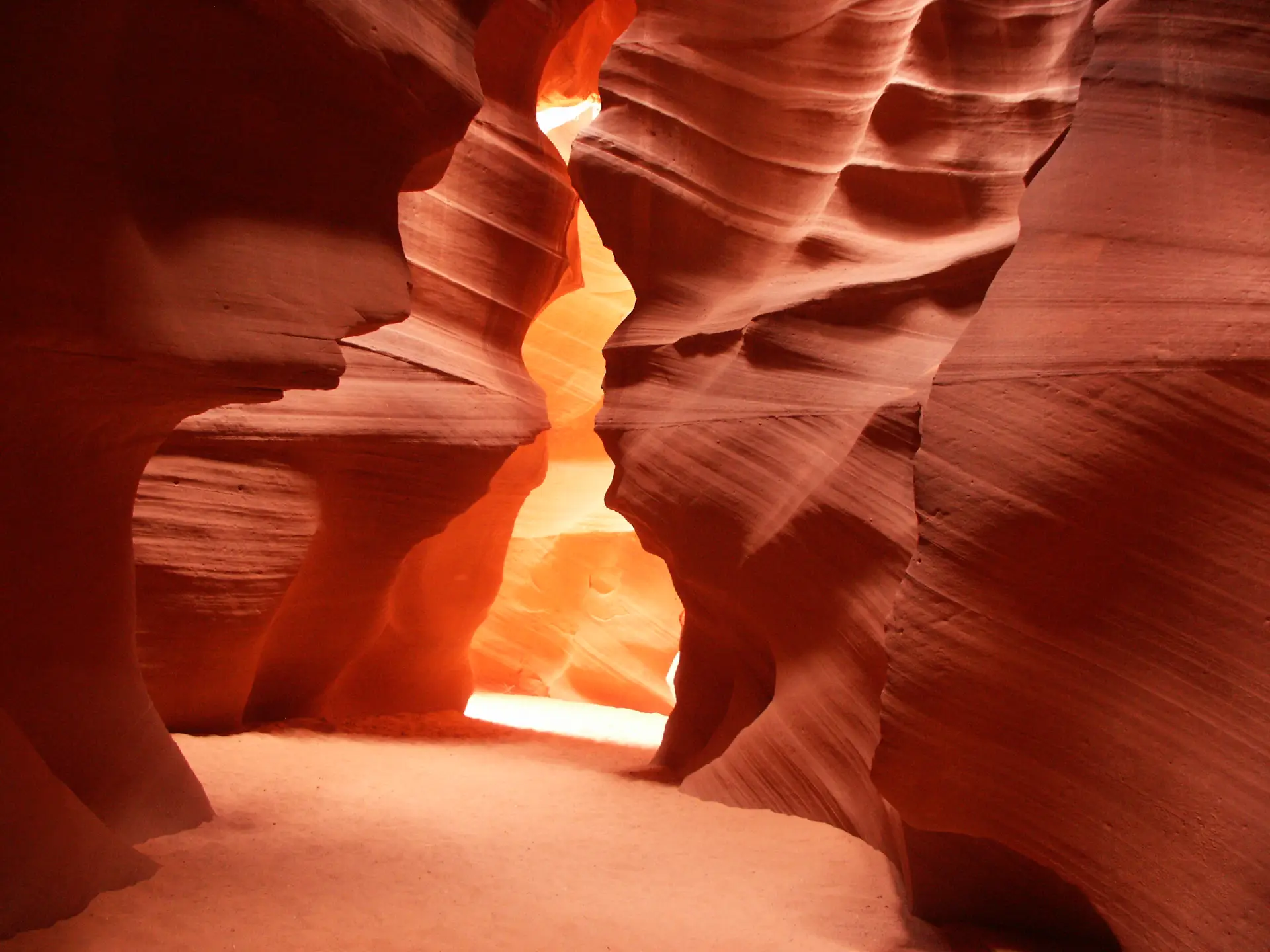Antelope Canyon

A slot canyon in the American Southwest, on Navajo land east of Lechee, Arizona.
Place overview
Antelope Canyon is a slot canyon formed by the erosion of sandstone due to flash flooding. Rainwater during monsoon season runs into the basin above the slot canyon sections, picking up speed and sand as it rushes into the narrow passageways. Over time the passageways eroded away, deepening the corridors and smoothing edges to form it's characteristic rounded shapes.
Includes six scenic slot canyon sections on the Navajo Reservation, referred to as Upper Antelope Canyon (or The Crack), Rattle Snake Canyon, Owl Canyon, Mountain Sheep Canyon, Canyon X and Lower Antelope Canyon (or The Corkscrew). It is the primary attraction of Lake Powell Navajo Tribal Park, along with a hiking trail to Rainbow Bridge National Monument.
The Navajo name for Upper Antelope Canyon is "Tsé bighánílíní", which means 'the place where water runs through the rocks'. Lower Antelope Canyon is "Hazdistazí (called "Hasdestwazi" by the Navajo Parks and Recreation Department), or 'spiral rock arches'. Both are in the LeChee Chapter of the Navajo Nation. They are accessible by Navajo guided tour only.
Antelope Canyon was formed by the erosion of Navajo Sandstone due to flash flooding and other sub-aerial processes. Rainwater, especially during monsoon season, runs into the extensive basin above the slot canyon sections, picking up speed and sand as it rushes into the narrow passageways. Over time the passageways eroded away, deepening the corridors and smoothing hard edges to form characteristic "flowing" shapes.
Learn more about Antelope CanyonView places in the same country
Gallery
View the source gallery here: Antelope Canyon Wikimedia
